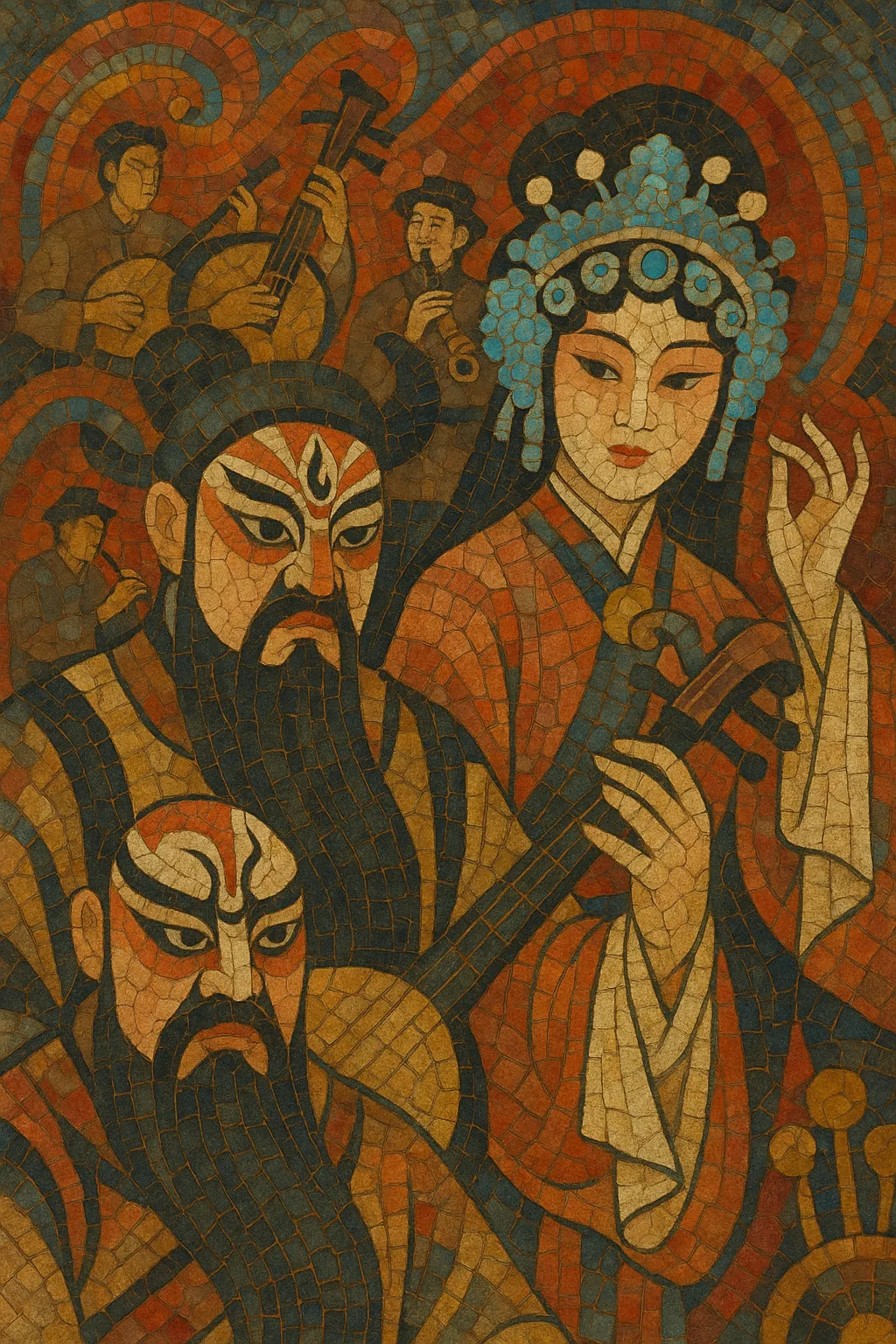Yangzhou opera (Yangju, 扬剧) is a regional form of Chinese xiqu that developed in and around Yangzhou, Jiangsu province. It features singing in the local Jiang–Huai Mandarin dialect, stylized speech, and a role system aligned with the classic sheng–dan–jing–chou categories.
Musically, Yangzhou opera blends pentatonic melodic contour with the banqiang (metrical–arias) system, drawing on Xipi and Erhuang tune-types as well as local folk melodies. Ensembles typically center on huqin strings (such as erhu/gaohu), yueqin, pipa, sanxian, dizi/suona, and a vibrant percussion battery (gongs, drums, clappers) that articulates dramatic pacing. Staging emphasizes clear narrative, elegant gesture, and expressive vocal ornamentation rather than large-scale acrobatics.
Repertoires range from romantic and domestic dramas to historical tales, often balancing lyrical tenderness with comedic interludes and moral reflection.
Yangzhou opera coalesced during the 19th century in the prosperous canal city of Yangzhou, where a dense marketplace of storytellers, folk singers, and traveling troupes fostered hybrid theatrical practices. Local folk tunes and narrative singing blended with the established xiqu tradition, adopting the banqiang framework and absorbing influential tune-types from Kunqu and, later, the Xipi/Erhuang system.
In the early 20th century, urban theaters and professional companies stabilized casting conventions (sheng–dan–jing–chou), refined dialect-based delivery, and expanded orchestration with huqin strings, plucked lutes, bamboo flutes, and a codified percussion language. Repertoires matured to include domestic comedies, ethical dramas, and historical tales, reflecting Yangzhou’s literati culture and commercial cosmopolitanism.
After 1949, regional troupes standardized curricula, created new plays, and adapted staging for modern venues and media. Although competition from cinema and TV reduced theater-going, cultural heritage initiatives, scholarly documentation, and local institutions in Jiangsu have supported transmission, training, and revival programming. Today, Yangzhou opera remains an emblem of Jiang–Huai regional identity, performed in festivals, dedicated theaters, and educational projects, with selective modernization of orchestration and staging while retaining core singing and role aesthetics.


